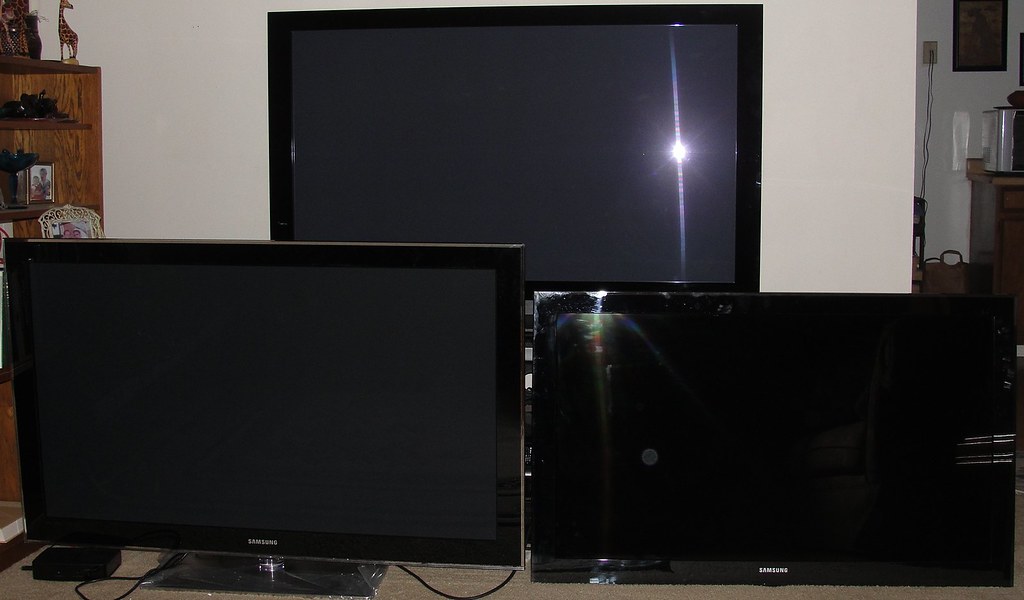Anyway with respect to your potential purchase honestly i don't know why one would buy a V10 if the better V20 is around the corner.
unlike last years model where the G10 and V10 where the same or very close in contrast ratio,this year the V20 panels have much deeper blacks then the g20
I will not be buying a V10. I just do not have so much money

But I do admire that TV. VT20 is going to take that crown in my heart. :lol:
For me its like a wish to own a Ferrari :licklips:
I will be settling for the 50" Samsung or LGs for the VFM. Anyways thats off-topic here

Well like i said before i was generally speaking. the plasma be it the pioneer kuro still has it flaws,it also effected by ABL,its also effected by loss of contrast due to glare,it cannot show judder free 24p movies.
As far as the V10 its also effected by the rising black levels,ABL,glare,phopor trail etc.
those deep blacks can be seen only at night or dark viewing conditions.
In case you read some professional reviews lately many mention specifically about the plasma daytime black or the effect of ambient light in plasmas.
@forum
Adder has brought up some good points that we typically get to hear. I have marked them in
BOLD.
I would appreciate if experts help answer the following aspects :
1. Explain technically what each of these issues mean or help one find out?
Eg : Chk the post from Blasto :
24p explained
This sort of post allows a layman to understand whether he must worry about the inability to play a 24p movie in first place.
Effect of ABL is one stuff I still haven't understood yet. But I see it constantly mentioned by Adder who's suggestion I do care here.
2. Is it a design flaw in every Plasmas? or restricted to low priced Plasma models?
This is what this thread is for. And this what a new reader will expect to find out.
I could see that even the C series Panasonic plasma is 24p capable.
Now does it play well? I must leave that to the experts here.
But if I have understood correctly a 24p capable TV just re-adjusts its frame refresh rate to match the source.
So 24p playback is not something Plasma specific in my opinion. On the other hand Phosphor trail is a Plasma specific issue.
3. If the issue is Plasma specific, is it still relevant in 2009-10?
Eg: Burn-in is a non-issue in recent Plasmas. IR still is an issue.
4. If the issue is not-Plasma specific, is it terrible in Plasma bcoz of the limitations in PDP?
Eg: 24p playback is an issue seen on LCDs as well. Now does the PDP architecture technically makes the issue more significant?
5. How it affects an average viewer?
Eg: Assuming that a reader has a 24p source and gets a Plasma without support for 24p playback, what will the viewer get in that case?
So lets have a constructive debate on each of the aspects Adder has pointed out. Please feel free to add other topics (like Power consumption).
If its turns out to be a non-issue in recent Plasmas, it can be a candidate to go to the Myth list

I feel the first post should be updated once we reach on an agreement. (if we ever reach

)
Also add any questions(apart from the five I have suggested) that a forum reader expect to be answered here.
Anyways, I know you have already spend lot of effort in various threads to answer these queries. So this is just my humble request to answer these. I do feel a need to have a Stick post on Television section if we do see a constructive discussion on the common Plasma issues that we frequently get to here.
Cheers
PS : I omitted "rising black levels" on purpose as its limited to Panasonic Plasmas. Separate thread exists where this issue is discussed. Bringing it here does not add any value in my opinion.






